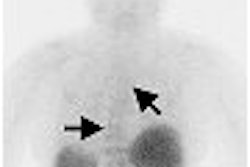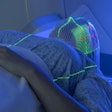SAN FRANCISCO - Acquired lymphangiectasis is the diffuse dilation of lymphatic channels by an external cause. It is a common complication in patients who have undergone radiation treatment for cervical cancer. A poster presentation this week at the American Academy of Dermatology described a case of acquired lymphangiectasis after breast radiotherapy.
In the breast, postradiation therapy cases of "lymphangiectasis are most often benign, but may be atypical or rarely malignant," wrote Dr. Dana Black and Dr. Michele Maroon from Geisinger Medical Center in Danville, PA. "Major dermatology texts do not recognize this entity. Reports in literature use varying nomenclature."
In their poster, the authors described a case of a 47-year-old woman who had undergone radiation treatment for invasive breast carcinoma. Three years after her treatment, a cluster of 2- to 5-mm pink and translucent papules appeared along the patient's left lateral breast. An MRI ruled out deeper lymphatic obstruction. She was treated with shave excision and remained lesion free for two years, Black and Maroon reported.
Given the lack of literature on this condition, there is tendency for clinicians to treat lymphangiectases and lymphangioma circumscription as the same disease, the authors said. But they are two different entities, they stressed.
"In addition to being a congenital condition, lymphangiomatosis is associated with dilated vessels deep in the reticular dermis," they stated. On the other hand, the superficial lymphangiectases is generally confined to the papillary dermis.
"We feel it is important to be aware of this disorder and to use consistent terminology describing lymphangiectasis," they concluded.
More information on lymphangiectatasis can be found in a Journal of the American Academy of Dermatology article. The authors from Case Western Reserve University in Cleveland, OH, describe a case of benign lymphangiomatous papules of the skin four years after a patient had radiation therapy to the chest for adenocarcinoma of the breast (May 2005, Vol. 52:5, pp. 912-913).
By Shalmali Pal
AuntMinnie.com staff writer
March 6, 2006
Related Reading
Permanent seed implants reduce radiotherapy burden in breast cancer, January 5, 2006
Breast MR helps refine partial-breast irradiation, October 9, 2005
Copyright © 2006 AuntMinnie.com



















